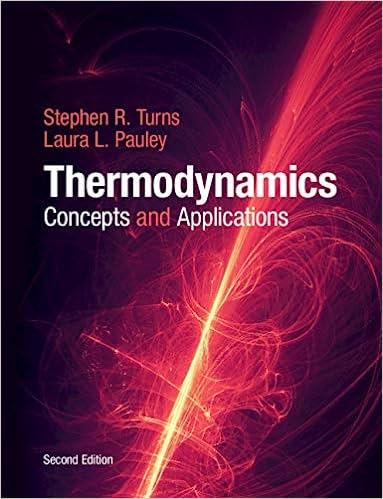An air-standard Otto cycle is often used as a very simplified model of a spark ignition engine.
Question:
An air-standard Otto cycle is often used as a very simplified model of a spark ignition engine. The following sequence of processes applied to a fixed mass of air in a piston–cylinder assembly constitutes the Otto cycle:
Process 1–2: Isentropic compression from the maximum volume Vmax to the minimum volume Vmin. This process can be described as PVγ = constant, where γ is the specific-heat ratio.
Process 2–3: Constant-volume heat addition to a peak cycle temperature T3.
Process 3–4: Isentropic expansion from Vmin to Vmax. See the note for process 1–2.
Process 4–1: Constant-volume heat rejection to return to the initial state.
A. Sketch this cycle in P–V coordinates and label each state point (1, 2, 3, and 4).
B. The following properties are associated with a particular execution of the Otto cycle. The initial state (state 1) temperature, pressure, and volume are 320 K, 120 kPa, and 0.001 m3, respectively. The compression ratio, Vmax/ Vmin, is 9.0. The maximum temperature is 3000 K (state 3). Assume the specific heats can be treated as constants with the following values: cp = 1.008 kJ/kg · K, and cv = 0.721 kJ/kg K. Determine the work transfer associated with each process and the net work for the cycle.
Step by Step Answer:

Thermodynamics Concepts And Applications
ISBN: 9781107179714
2nd Edition
Authors: Stephen R. Turns, Laura L. Pauley





